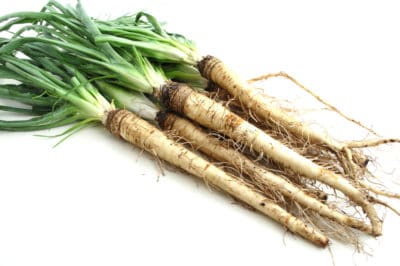Where Should I Grow Salsify?
Choose a space with well-drained loamy or sandy soil that receives full sun and where the soil contains rich deposits of organic material. The pH level should be between 6.0 and 6.8. If you are planting your salsify in the spring, be prepared to provide shade when summer temperatures are above 85°F (29°C) to prevent the roots from becoming stringy and tough.
When Should I Plant Salsify for a Fall Harvest?
Salsify grows from seed, and the seeds germinate in about a week, but they can take up to three weeks before they are ready to transplant. If you are starting your seeds indoors, you should transplant your salsify about two weeks before the last frost date in your area. This means you need to start your seeds indoors five to six weeks before the last frost date in your area.
If you intend to sow your seeds directly in your garden, sow them three to four weeks before the last frost date in your area.
When Should I Plant Salsify for Spring Harvesting?
For a winter or spring harvest, wait to sow your seeds until mid to late fall after temperatures have cooled to below 85°F (29°C). If you have harsh winters, cover the soil with a layer of straw 2 feet thick.
How Do I Prepare the Soil to Plant Salsify?
Because salsify is a root plant and the roots grow approximately 12 inches deep, the soil needs to be thoroughly worked to at least that depth. All rocks need to be removed, and clumps of soil need to be broken up completely. Obstacles like rocks and clumped soil cause the roots to fork. Work the soil in the fall for spring planting or at least two weeks before fall planting. Add compost as you work the soil, but avoid adding manure as too much nitrogen causes the roots to split.
How Do I Sow Salsify Seed?
If you are starting the seeds indoors in peat pots, space them 1/2 inch apart and cover them with 1/2 inch of soil.
Transplant the seedlings when they are 3 inches to 4 inches tall. Create ruts that are 18 inches to 24 inches apart and deep enough for the roots of the seedlings. Break the peat pot away from the soil around the roots and loosen the soil if necessary, but don’t remove it entirely. Space the seedlings 3 inches to 4 inches apart and cover them so that just the tip of the top of the root shows above ground.
If you sow the seeds directly in the garden, create ruts that are 1 inch deep and 18 inches to 24 inches apart. Space the seeds 1/2 inch apart, and cover them with 1 inch of soil. When the seedlings are about 2 inches tall, thin them so that they are 3 inches to 4 inches apart.
What Companion Plants Grow Well With Salsify?
Salsify’s companion plants include:
- Carrots
- Potatoes
- Sweet potatoes
- Turnips
- Swede
How Do I Care for Salsify?
Keep your salsify watered evenly to prevent the roots from splitting.
Salsify has almost no problem with disease or pests, but, because salsify grows slowly, it can be overshadowed by faster growing weeds. Consequently, you will need to keep your salsify well weeded. Keep in mind, though, that salsify resembles small twigs when it first sprouts, so if you have started your seeds directly in your garden, be careful not to uproot them as you weed.
About midway through the growing season, add compost around the plants, again, avoid using manure.
How Do I Harvest Salsify?
You can use the lighter colored, lower part of the leaves in salads, and the flowers also are edible.
When harvesting the roots, be careful not to break or damage them as that will reduce the amount of time you can store them. Place a shovel or a harvesting fork into the ground beside the plant deeper than where the root would grow and tilt the shovel or fork to lift up under the plant.
How Do I Store Salsify Roots?
You can store salsify grown for fall or winter harvest in the ground. Dig up what you will need for the harshest part of the winter before the ground freezes, and then cover the rest with a layer of straw 2 feet thick. Dig up the remainder of your crop in the spring before the plants begin to grow again, or allow them to come up in the spring to harvest the blossoms or to let the plants produce seeds for harvesting.
You can store the roots that you harvest for up to four months by trimming off the leaves and placing them in moist sand in a dark location that maintains a temperature of 32°F (0°C). Roots can be refrigerated for three to four weeks.
Can I Grow Salsify in a Container?
Root crops aren’t the best choices for container gardens. You will need to choose a container deep enough to accommodate the long roots and has bottom drainage.
